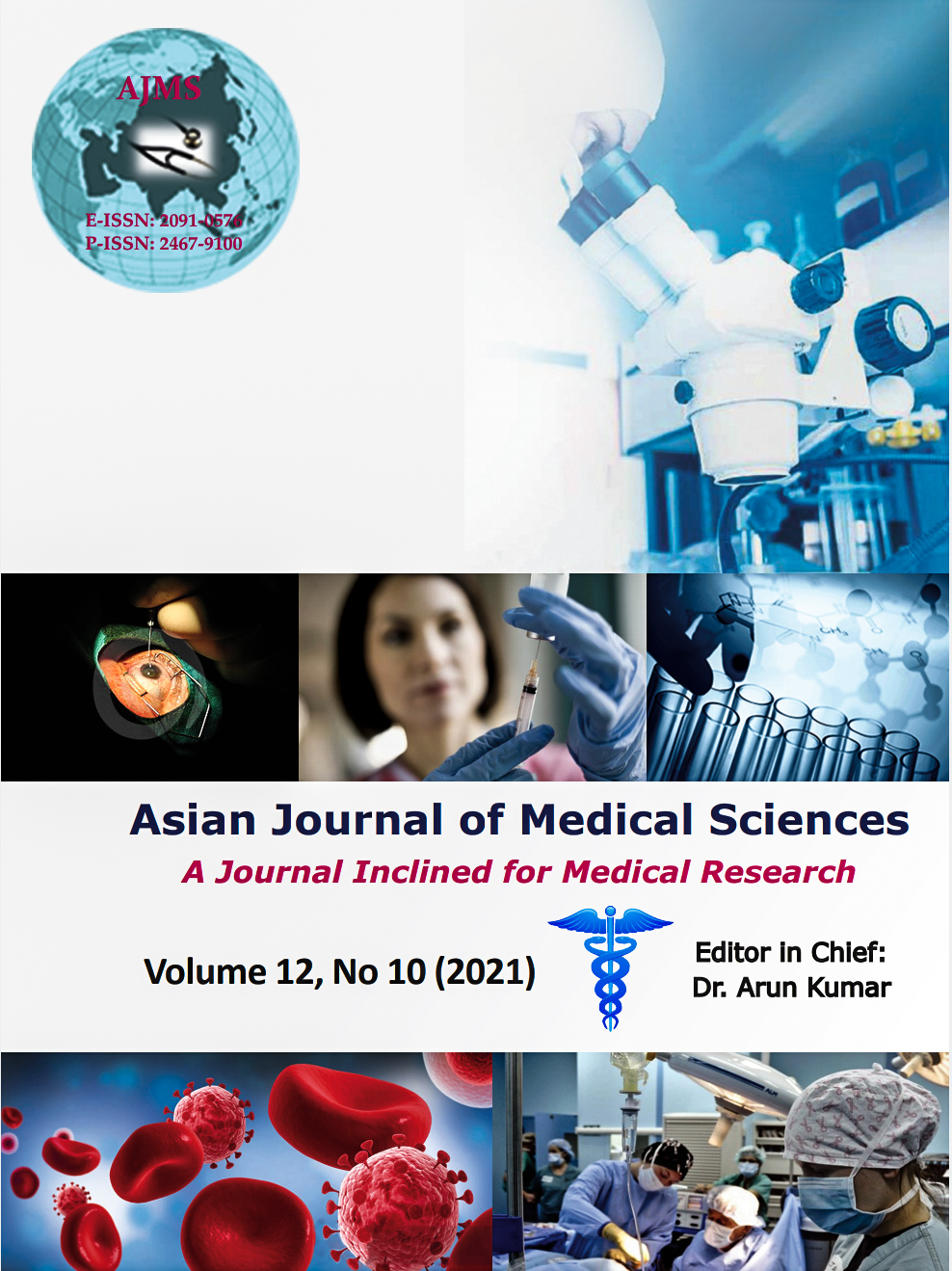Evaluation of Cephalic Index in children from the Madheshi community in Sarlahi district, Nepal
Keywords:
Cephalic Index, BMI, Madheshis community, NepalAbstract
Background: Cephalic index is one of the important craniofacial parameters which is commonly used for investigating the length and breadth of the head. Cephalic Index (CI) is defined as the ratio between maximum breadth of the head and the maximum length of the head multiplied by 100. Body mass index (BMI) is a nutritional marker of the body derived from the measurement of height (in m2) and weight (in kg).
Aims and Objective: To analyse the effect of BMI on the CI.
Materials and Methods: This study was a cross-sectional study conducted from April 2021 to June 2021 with sample size of 200 children of age groups 5-8 years from Ramnagar Gaupalika of Sarlahi, Province 2, of Nepal. We measured the cephalic index of the children and asked a set of structured questionnaire to the guardian or parent of the children. Height and weight of the children were also measured and BMI was determined. Data analysis was completed using SPSS version 16.
Results: The mean age of the participants was 6.56 years, BMI of 18.09 and cephalic index (CI) of 81.82. The mean CI in males and females were 82.05 and 81.59 respectively. Our results show significant association between BMI category and CI category (chisquare test, p-value=0.000), mode of delivery and BMI category (chisquare test, p=0.042) and significant negative correlation between BMI and CI (Pearson’s R=-0.591, p=0.037).
Conclusion: The most common pattern of CI was hyperbrachycephalic in the children of low BMI whereas the pattern of CI in case of the normal BMI was the mesocephalic type. It also confirmed that the sexual dimorphism exists in both the low BMI and the normal BMI.
Downloads
Downloads
Published
How to Cite
Issue
Section
License
Copyright (c) 2021 Asian Journal of Medical Sciences

This work is licensed under a Creative Commons Attribution-NonCommercial 4.0 International License.
Authors who publish with this journal agree to the following terms:
- The journal holds copyright and publishes the work under a Creative Commons CC-BY-NC license that permits use, distribution and reprduction in any medium, provided the original work is properly cited and is not used for commercial purposes. The journal should be recognised as the original publisher of this work.
- Authors are able to enter into separate, additional contractual arrangements for the non-exclusive distribution of the journal's published version of the work (e.g., post it to an institutional repository or publish it in a book), with an acknowledgement of its initial publication in this journal.
- Authors are permitted and encouraged to post their work online (e.g., in institutional repositories or on their website) prior to and during the submission process, as it can lead to productive exchanges, as well as earlier and greater citation of published work (See The Effect of Open Access).




